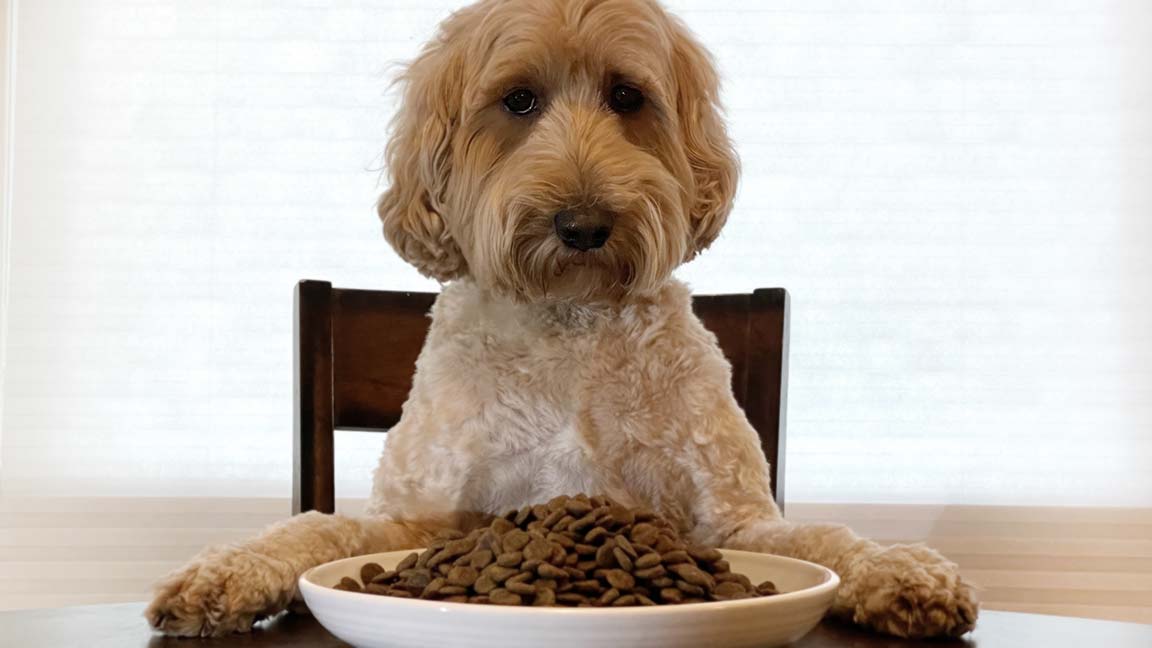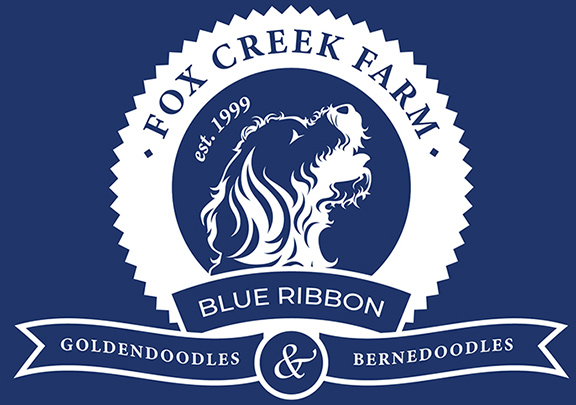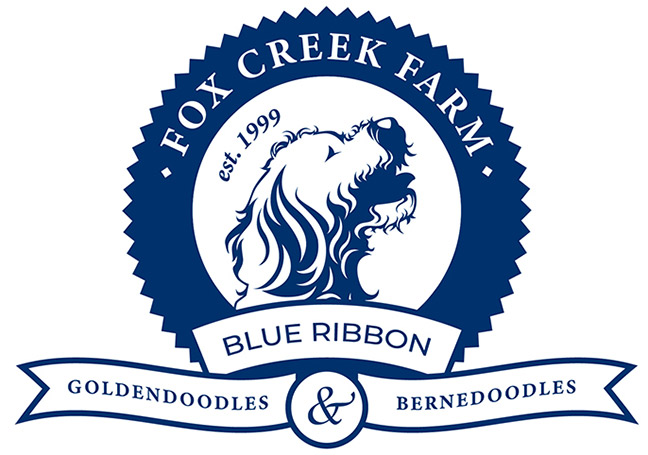
How Much Should I Feed My Dog For Great Health?
Feeding your Goldendoodles, or any adult dogs for that matter, the right amount of food is crucial to their overall health and well-being. One of the most important factors in determining how much food your dog should eat is their size, for instance, large Goldendoodles require more food compared to smaller dogs.
Healthy Weight in Dogs
To ensure your furry friend is at a healthy weight, it is essential to follow a feeding guide based on their daily caloric intake. A complete and balanced type of food is important for your dog’s health. The amount of food your dog should eat depends on various factors, including their activity levels, lifestyle, and overall health.
Dog Feeding Schedules
When determining how much to feed your dog, it is rather important to keep in mind their feeding schedule. Dogs should eat at least one meal a day, and you should offer valid feeding amounts based on their activity level. You can use pawTree’s customized individual nutrition plan to determine the feeding ration for each individual dog. Keep in mind that the results of this nutrition plan are based on feeding a high-density, quality kibble such as pawTree.
Remember that a healthy dog is a happy dog, and it is up to you to ensure they receive the proper nutrition they need to thrive. By following a proper feeding schedule and offering complete and balanced meals, you can ensure your Goldendoodles, and all puppies and adult dogs, receive the nutrition they need to stay healthy and happy.
Age, Size & Activity
It is important to note that while determining the appropriate feeding amount for your Goldendoodle, you should also consider their age, size, and activity levels. Younger dogs and more active dogs typically require more food than older or less active dogs.
Type of Dog Food
In addition to determining how much to feed your dog, it is equally important to consider the type of food you are offering them. A complete and balanced diet provides your dog with all the necessary nutrients they need for optimal health. Feeding your dog high-quality nutrient-dense dog food can also prevent potential health issues such as obesity, diabetes, and heart disease.
To ensure that your dog is receiving the appropriate amount of food, you can use a dog feeding chart to track their daily food intake. It is important to weigh your dog regularly to keep track of their weight and manage their feeding amounts accordingly.
When it comes to feeding your dog, it is also important to establish a consistent feeding schedule. This helps regulate their digestive system and ensures that they do not go too long without eating. Some dog owners prefer to feed their dogs twice a day, while others prefer to feed them three to four smaller meals throughout the day.
Automatic Feeding
If you have a busy schedule and cannot be home to feed your dog at regular intervals, you may want to consider using an automatic feeder. Automatic feeders can be programmed to dispense food at specific times, ensuring that your dog is fed even when you’re not home.
It is also important to remember that feeding amounts can vary depending on the type of food you are offering your dog. Wet dog food typically contains more water and fewer calories than dry dog food, which means your dog may need to eat more to get the same amount of nutrition. Wet food is not recommended unless prescribed by a veterinarian. Dry kibble is beneficial to dogs as crunching meals help to keep teeth cleaner, slows down the food intake, and allows the dog to be satisfied more easily.
Behavior & Health
In addition to monitoring your dog’s weight and food intake, it is also important to pay attention to any changes in their behavior or health. If your dog suddenly starts eating more or less than usual, it could be a sign of an underlying health issue. You should also consult with your veterinarian if you notice any changes in your dog’s appetite, weight, or energy levels. Keep in mind that when puppies reach the end of their growth stage (6-12 months of age), they will have a decrease in appetite as their caloric needs dramatically decrease. This is not a time to change their kibble as new kibble will likely entice them to eat more than what their body is telling them to consume. This can cause obesity from a young age.
Portion Size
To determine the appropriate portion size, it is important to know that the feeding instructions on the back of every bag of dog food are generic. There is no one size fits all for determining the appropriate rations. Each brand of kibble has a different calorie content, so the Pet Profile is a valuable and unique tool to determine the right amount for each dog (and cat for that matter!). You can also talk to your veterinarian to determine the appropriate portion size for your dog based on their weight, age, and activity levels.
Quality of Food
Another important factor to consider is the quality of the food you are offering your dog. Low-quality dog food can contain fillers, artificial flavors, preservatives, and by-products that can negatively impact your dog’s health. On the other hand, high-quality dog food made with natural ingredients can provide your dog with the necessary nutrients they need to maintain good health. It is important to look at the ingredient label as real meat should always be the first ingredient. Avoid foods that have corn, gluten, and soy as they are cheap fillers and also have a reputation as ingredients to which many dogs are allergic.
It is also important to keep in mind that dogs may have different nutritional requirements at different stages of their life. For example, puppies require more protein, fat, and calories than adult dogs, while senior dogs may require a diet that is lower in calories and fat.
According to the Association of American Feed Control Officials (AAFCO), the general guideline for feeding adult dogs is to offer them between 2-3% of their body weight in food per day. However, this can vary depending on the individual dog’s lifestyle and activity levels and the density of the nutrients in the chosen brand of kibble.
Weighing Your Dog
As mentioned earlier, it is important to weigh your dog regularly and adjust their feeding amounts accordingly. If your dog is consistently gaining weight, you may need to reduce their food intake slightly. On the other hand, if your dog is losing weight or appears to be hungry all the time, you may need to increase their food intake.
A dog that is maintaining its weight but still seems hungry all the time can be accommodated by adding ¼ to ¾ cups, depending on their body size, of cooked canned green beans to add volume to their feeding ration. This adds almost no calories and provides a healthy addition to regular meals.
Dog Treats
The caloric intake your pup requires could differ based on their age, weight, physical activity, and general well-being. If your canine companion is putting on too many pounds, it might be a good idea to cut down on the amount of food they’re eating.Finally, it’s important to keep in mind that treats should be given in moderation and should not make up a significant portion of your dog’s daily caloric intake. Treats can be a great way to reward your dog for good behavior or as a special snack, but they should not be used as a substitute for a complete and balanced diet.
Another important consideration when it comes to feeding your dog is their individual lifestyle and activity levels. Dogs that are more active or have higher energy levels may require more food than dogs that are less active. Similarly, older dogs or dogs with certain health conditions may require a special diet to meet their unique nutritional needs.
Feeding Guide
It’s also important to note that the feeding guide provided on dog food packaging is just that – a guide. The amount of food your dog actually needs may vary depending on their age, weight, activity level, and overall health. Additionally, the feeding guide may not take into account any additional treats or snacks that you give your dog throughout the day.
In terms of offering treats to your dog, it’s important to do so in moderation. Treats can be a great way to reward your dog or offer a special snack, but they should not make up a significant portion of your dog’s daily caloric intake. High-calorie treats can contribute to weight gain and other health issues if given too frequently or in large amounts. Stick with healthy treats, preferably freeze-dried raw meat with limited ingredients.
In conclusion, determining how much to feed your dog is an important part of ensuring their overall health and well-being. By considering factors such as your dog’s weight, age, activity level, and overall health, and consulting with your veterinarian as needed, you can provide your dog with the appropriate feeding amounts and type of food to support their unique needs.
Establishing a consistent feeding schedule, monitoring your dog’s weight and food intake, and offering treats in moderation can also help ensure that your furry friend maintains a healthy weight and lives a happy, healthy life.







